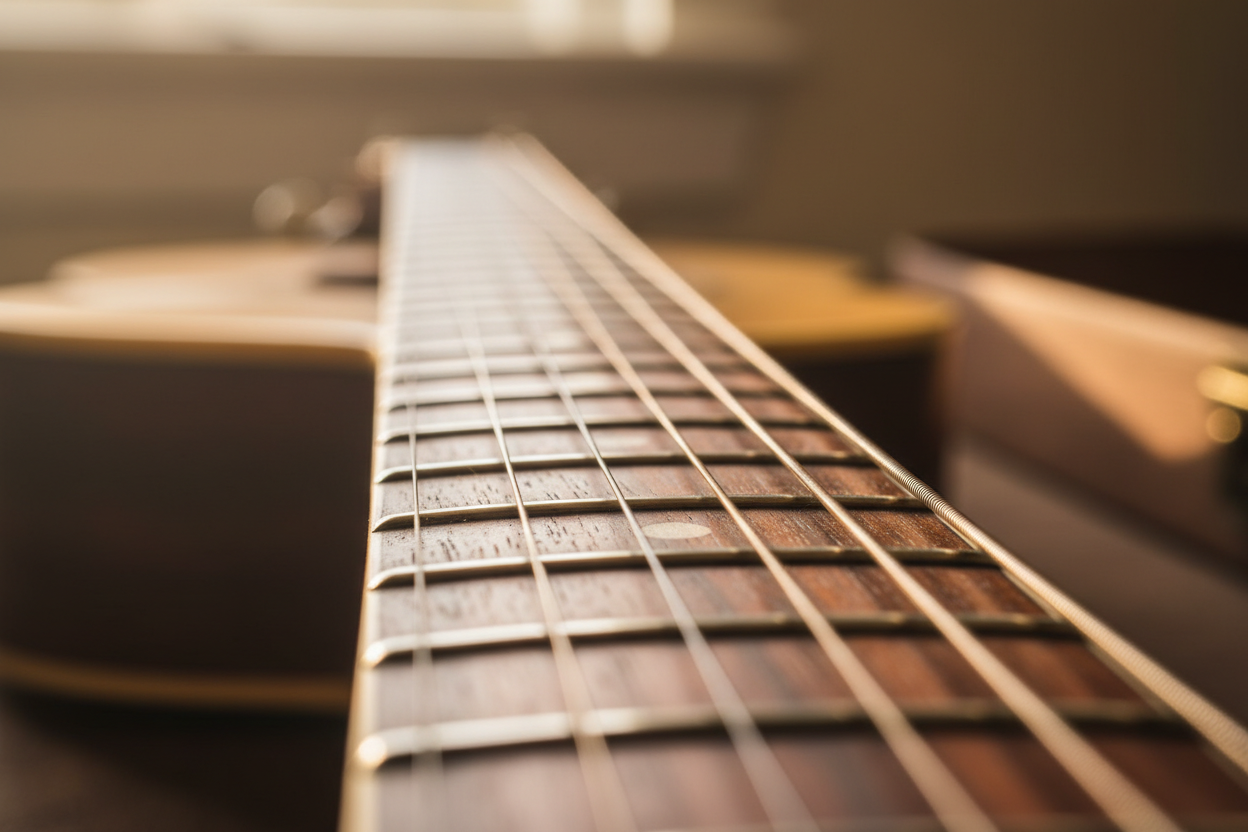Making Your Guitar More Playable
Every budding guitarist dreams of making beautiful music, but the journey often begins with sore fingers and a seemingly uncooperative instrument. However, it doesn't have to be this way. With the right adjustments, your guitar can become a friendlier companion on your musical journey. This transformation primarily involves a professional setup and initially opting for lighter strings.
Understanding the Importance of a Setup
A guitar setup is akin to a "spa day" for your instrument. It's a series of adjustments made to ensure your guitar is easy to play and sounds its best. One crucial aspect of a setup is adjusting the action - the height of the strings above the fretboard. High action requires more force to press the strings down, often leading to sore fingers and a less enjoyable playing experience for beginners.
Having a professional setup done on your guitar can lower the action, making the strings easier to press down and significantly reducing finger pain. Moreover, a well-set-up guitar sounds better and is more responsive, making your practice sessions more enjoyable and productive.
Starting Light: The Right Strings for Beginners
The choice of strings can also significantly impact your playability and comfort. For those starting, lighter gauge strings are advisable. They are thinner and require less pressure to fret, making them gentler on your fingers.
-
For Acoustic Guitars: Lighter gauge strings such as 10's are a good choice. They provide a balance of tone and ease of play.
-
For Electric Guitars: Even lighter strings like 8's or 9's are recommended. They allow for easy bending and fretting, essential for exploring the electric guitar's capabilities.
Exploring Alternative String Materials
Traditionally, acoustic guitars come with steel strings, known for their bright and loud sound. However, they can be tough on tender fingers. A softer alternative is nylon strings, often found on classical guitars. Some acoustic guitars are suited to accommodate nylon strings, providing a much softer touch, aiding beginners in their early stages of learning.
Transitioning as You Progress
As your fingers develop strength and calluses, transitioning to heavier strings becomes less daunting. Heavier strings offer a fuller sound and can enhance your playing experience. It's a natural progression that aligns with your evolving skills.
Reaping the Long-term Benefits
The initial investment in a professional setup, coupled with a thoughtful choice of strings, sets a positive tone for your learning journey. These adjustments lead to more enjoyable practice sessions, quicker mastery of techniques, and a smoother path in learning and performing songs. The less you struggle with your instrument, the more you can focus on honing your skills and enjoying the beautiful world of music.
Conclusion
Embarking on a musical adventure should be a joy, not a pain. Your guitar shouldn't fight you; instead, it should resonate with your musical aspirations. By investing in a guitar setup and starting with lighter strings, you transform a potentially painful experience into a pleasurable journey. As you progress, your fingers will adapt, and soon you'll find harmony with your instrument. So take the step, make your guitar a friendlier companion, and let the music flow effortlessly. Your fingers (and your ears) will thank you!




